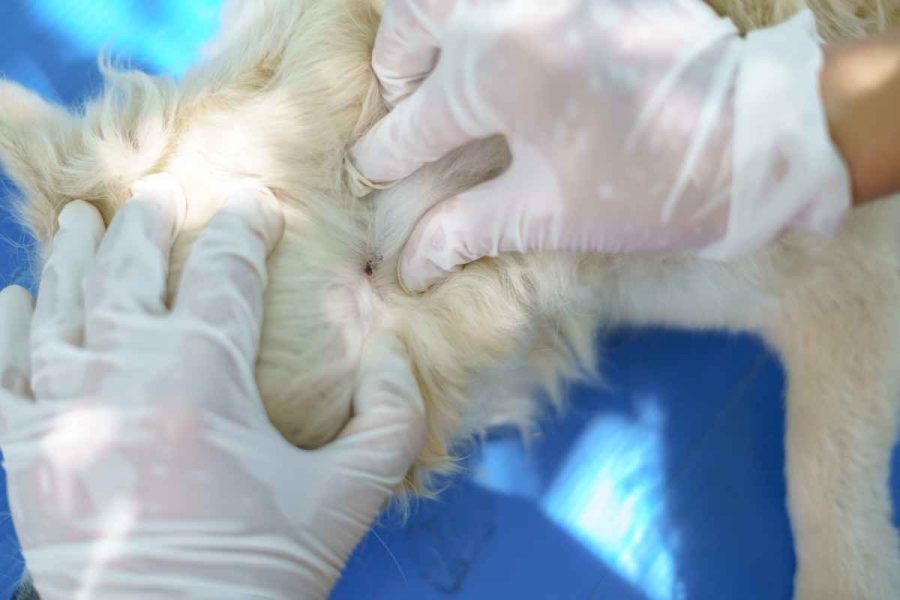Fleas are small, very small, and it is not always easy to identify them on your dog, but always remember to carry out a routine check on your dog, especially on returning from a walk. The flea is found all over Italy and can be found practically all year round. It can be found outdoors in warm or humid areas, in flowerbeds, lawns, gardens, but also in heated buildings, from dog kennels to couches. Even during a simple walk your dog can get fleas. How can you recognise fleas in dogs? Let’s take a look at the symptoms and remedies if we realise that our dog has caught them.
How to recognise dog fleas
It is not easy to tell with the naked eye if your dog has caught fleas, but there are a number of symptoms to look out for to see if your dog does indeed have them. Not all symptoms are the same for all dogs, but basically a dog that has fleas will scratch often and in particular the neck and near the ears, tend to bite, lick itself and be nervous and restless. An inflammation of the skin, the so-called ‘flea allergy dermatitis’, may also develop, the hair may be broken and thinning and the skin may be reddened, possibly even with scabs.

But how do we recognise fleas in dogs? Adult fleas can be identified directly on the animal’s coat, also because they tend to move, but you may also notice black, immobile dots on the dog or inside its kennel. In this case it is flea excrement, but how can you distinguish the dirt that can accumulate on the coat after an excrement exit? If in doubt, remove the dots from the dog’s coat with a white cloth, then try moistening them with water and if a reddish halo forms, it means that it is fleas, as fleas feed on the blood of their host. If fleas can easily infest your dog, they can also easily nest in your home – this is why it is necessary to carry out a disinfection of all the rooms to kill the adult fleas and kill the larvae, also removing the hoover bag. Always remember to protect your dog with the right antiparasitic throughout the year (injections, collar etc.) and if your dog has fleas, wash him immediately in a warm bath using an antiparasitic shampoo, removing fleas and eggs with a fine-toothed comb, then dry your dog and proceed with the antiparasitic treatment.
